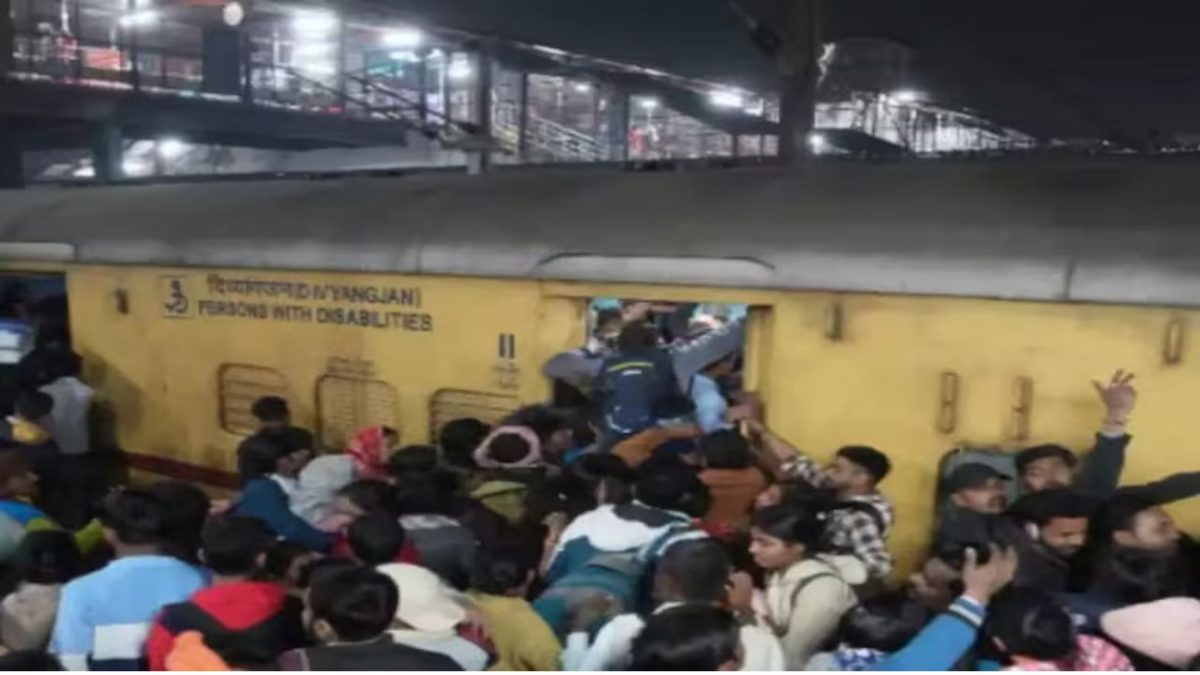A tragic stampede at New Delhi railway station in February, in which 18 lives were lost, was triggered by a large piece of luggage falling from a passenger’s head, Railways Minister Ashwini Vaishnaw informed Parliament on Friday (August 1).
The incident, described as the deadliest railway station tragedy since Mumbai’s Elphinstone Road stampede in 2017, which killed 23 people, had prompted widespread criticism and calls for systemic changes.
What happened on the night of February 15?
The chaos unfolded on February 15 around 8:48 pm on a foot-over-bridge connecting platforms 14 and 15, during the evening rush hour between 9:15 and 9:30 pm. Thousands of passengers had flooded the station, many of whom were heading to Bihar-bound trains during the Maha Kumbh festival in Prayagraj.
“There was a big headload falling from one of the passengers and the pressure was passed on to the stairs of platforms 14/15, resulting in the tripping of passengers,” Vaishnaw explained in his parliamentary reply.
The narrow 25-foot-wide footbridge, already congested with passengers carrying large headloads, became a deadly bottleneck. Post-mortem reports confirmed that the victims succumbed to traumatic asphyxia.
A committee investigating the incident found that while crowd management protocols were in place, the passenger density on the foot-over-bridge had surged after 8:15 pm.
Railway records, cited by Hindustan Times, revealed that 7,600 unreserved tickets were sold that evening, with sales peaking at 1,500 per hour as crowds began gathering from 6:00 pm. The committee noted that the heavy headloads carried by many passengers significantly hindered movement on the narrow bridge, contributing to the catastrophe.
Railway experts have sharply criticised the incident, with some labelling it a “completely avoidable incident” and a case of “classic mismanagement.”
Indian Railways implements preventive measures
In response, Indian Railways is rolling out extensive measures to prevent future tragedies at 73 stations identified as prone to heavy passenger rushes.
Minister Vaishnaw outlined plans for permanent holding areas outside these stations, building on temporary arrangements tested during the 2024 festival season.
Impact Shorts
More ShortsPilot projects are already underway at key stations, including New Delhi, Anand Vihar, Varanasi, Ayodhya, and Ghaziabad. Under the new system, passengers will only access platforms when their trains arrive, reducing congestion within stations.
To further enhance safety, Indian Railways will implement full access control at these 73 stations.
Passengers with confirmed reserved tickets will gain direct platform access, while those without tickets or on waiting lists will be directed to designated waiting areas outside.
Unauthorised entry points will be sealed to ensure tighter control.
Additionally, narrow foot-over-bridges will be replaced with wider 12-meter and 6-meter designs equipped with ramps, a model proven effective during the recent Mahakumbh festival.


)

)
)
)
)
)
)
)
)



